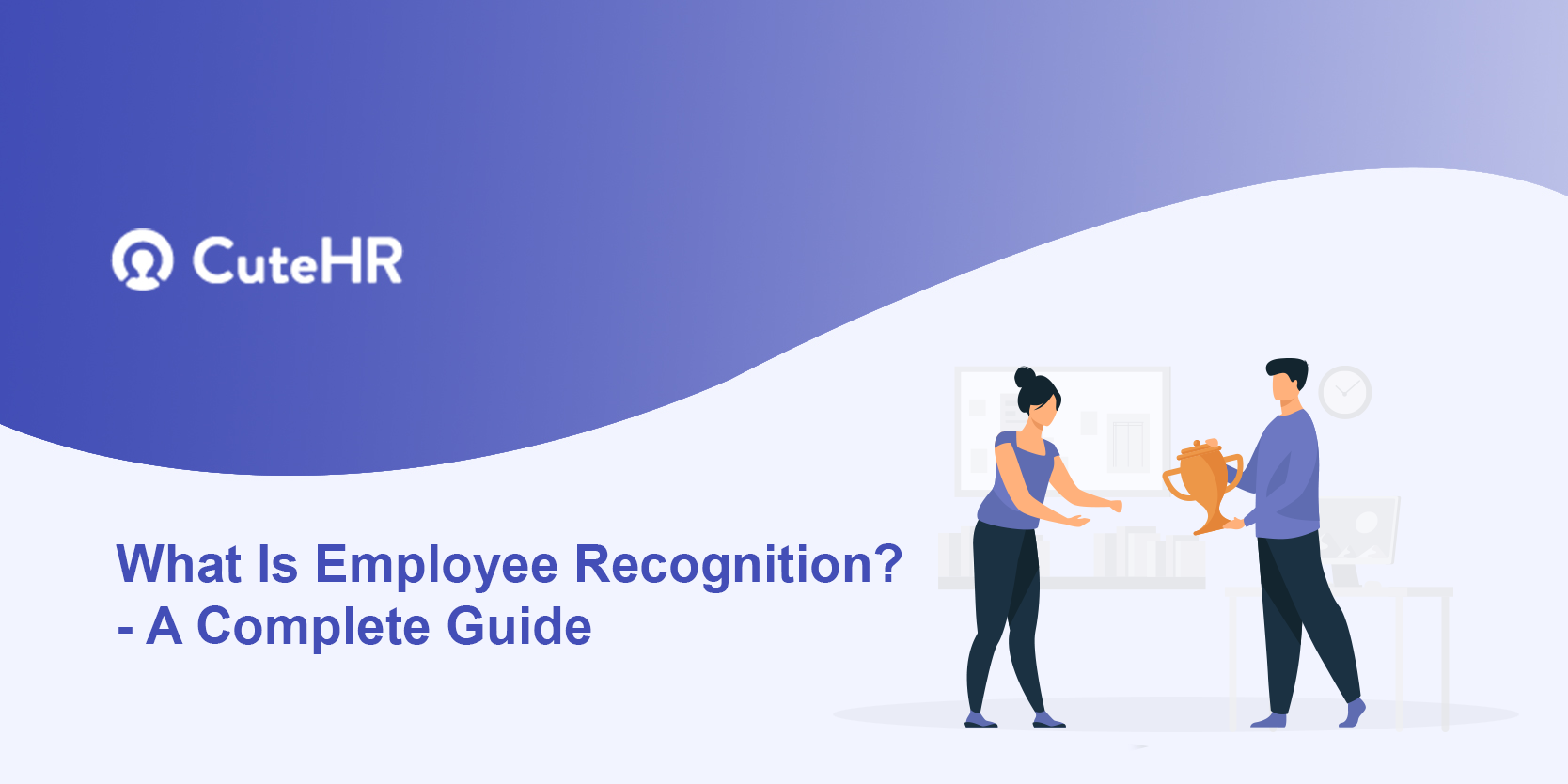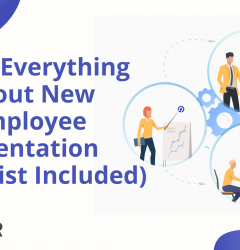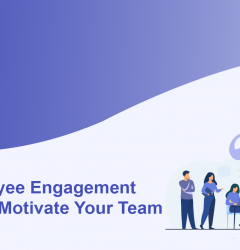30 May

Employees are an integral part of any enterprise’s success, isn’t it? Appreciation of good employees plays a crucial role in praising the good employees for maintaining their good work and motivating and encouraging others to perform in the same way.
Table of Contents
What Is Employee Recognition?
Employee Recognition is a token of appreciation or an act of kindness which an employer or the person in charge does to appreciate an employee either for their work or the length of their service. It is one of the most effective plans of a company to uplift the performance of the employees.
Key Takeaways
Let’s talk about some key takeaways of employee recognition:-
- Employee recognition programs improve employee retention conditions.
- Using different kinds of employee recognition programs will help the company to recognize more employees on the basis of different criteria levels like generation, culture, responsibility, and experience.
- Employee recognition programs also help to convey talent strategies, organizational values, or specific expectations to get the best results.
- Asking for frequent feedback and reaching out to help the employees to achieve their target performance level will not only recognize them for achievements but, most importantly, help them with their carrier growth and success.
Employee Recognition Defined
So what exactly do we exactly mean by employee recognition? There are many different ways to approach employee recognition. The approaches can majorly be classified into two types: Public and Private.
The public employee recognition approach includes some groups of other employees also like luncheon, party, award ceremony, or employee of the month award. Whereas private recognition is more on to an individual’s benefit like additional days off with pay, additional bonus or raises, access to the company’s peak amenities like clubs or resorts. Usually, companies combine both approaches in a mix of public and private recognition, but the desired outcome is the same: increasing employee motivation and engagement.
Why Is Employee Recognition Important?
As we know, employee turnover is an expensive procedure and a challenge for the workforce management team. According to a survey from the Society for Human Resource Management (SHRM),
68% of the companies believe that employee recognition has a significant influence on employee retention.
The same survey found out that
56% of the companies accepted that employee recognition programs improved their recruitment procedure.
The turnover cost of an employee is much more than what one expects. From writing and posting a job description to paying referrals and signing bonuses, the cost of finding a new employee keeps on adding up. Secondary costs of a turnover include decreased productivity, lower morale, and almost zero institutional knowledge. Recognition is something that employees enjoy and appreciate.
According to a study by Berin & Associates,
Companies with recognition programs prove to be highly helpful in improving employee engagement and had 31% lower voluntary turnover than those with no recognition programs. This states that 66% of the workers are likely to leave their jobs if they feel unappreciated or disengaged.
According to a Harward Business review,
“ it would take two and a quarter satisfied employees to generate the same output as one inspired employee.”
The contribution of a low morale employee may suffer in almost every aspect whereas, on the other hand, a high morale employee is likely to contribute greater creativity, productivity, and results. Employee recognition increases employee engagement which also results in upliftment in their productivity.
Who Gives Employee Recognition?
How do we show employee recognition? Well, it depends on the company’s state of affairs and what kind of recognition an employer is planning to share. Employee recognition programs must not leave the appreciation of the deserving employees to chance. Efforts in employee recognition play an important role in retention and recruitment work. Many companies follow a policy for selecting who will be responsible for different types of recognition.
- Top-down Recognition: This is the most conventional form of employee recognition. Usually the team leader, company manager, or executive heads the peer recognition programs.
- Peer Recognition: This form of recognition is lead by either co-workers or managers along with co-workers.
What Is The Role Of Employee Recognition In Company’s Success?
Employee recognition plays a key role in a company’s success as it leads to greater employee engagement, better employee morale, improved employee experience, greater employee retention rates, a brand boost, and more employee referrals for recruitment. It shows a positive influence over other important business models as well, like sustaining outputs, controlling expenses, and increasing profits.
But for an employee, recognition means a more positive relationship and closer ties with the company. It certifies the employees that the company values and appreciates their extra efforts and dedication towards the workplace.
Benefits Of Employee Recognition
While designing an employee recognition program, start with a strategy by planning out the goals of the program, how will it affect your company, the challenges and opportunities for your company. Here is a list of benefits that can help you while designing your plan.
- Hiring: Companies that value the contribution of their employees are often found to be people’s first choice. Sharing information about recognition programs of your company with potential employees should be an important part of your company’s overall talent strategy.
- Productivity: When employees notice that their efforts matter to the company and worthy of recognition, they push their limits furthermore. Recognition programs also encourage employees to sustain their high productivity levels.
- Excellence: Employee recognition programs encourage employees to produce excellent work. This strategy can also be used to create a sense of competition so that every employee gives their best.
- Employee Engagement: According to a survey, more than half of the employees are not engaged in their work and are unhappy with their company. And even more daunting is that 13 % of the workers spread their sorrow and are actively disengaged. Adaptation of employee recognition programs can significantly increase employee engagement and help them feel more valued and admired.
- Retention: The replacement, retraining, and recruiting costs are some of the major challenges faced by a company when a good employee leaves them. Many studies have shown that employee recognition programs can help in lowering turnover rates.
- Values: Choosing an employee that shows all the values important to your company, like learning, diligence, or obedience for recognition, can prove to stimulate the growth of those particular qualities among other employees as well.
- Morale: Employees feel valued and appreciated when they are recognised for their efforts. Therefore, morale and recognition go hand in hand.
- Trust: Trust can’t be only from one side. Employees are expected to trust the company, and in return, they should feel trusted as well. Employee recognition programs help the company to build and express trust towards their employees, keep them more engaged and unlikely to leave.
- Team culture: Designing employee recognition programs based on teamwork can be very helpful to reinforce team culture. Workplaces where team culture is followed result in improved morale and raise their performance levels.
- Customer experience: By restricting the employee recognition awards specifically to customer satisfaction benchmarks. Customer satisfaction surveys, sales performance, and feedbacks are some parameters that can be included in employee recognition programs.
- Performance and Innovation: Employee recognition can also be combined with a performance target to create employee engagement. The target of the performance may be different for every industry, but the ultimate goal is to improve and achieve high growth in the company. Feedbacks and inputs by the customer will compel the employees to reach their goals and help them to stay motivated.
What Are The Different Types Of Employee Recognition?
Are you confused as to how many types of employee recognition are there? There are multiple types of employee recognition that have their own pros and cons. What works out for a company may not work the same for the other. So, while designing an employee recognition program for your company, be very precise to your company’s needs and goals instead of copying someone else’s plan.
The most important point while planning employee recognition is that every employee must have an equal opportunity to achieve recognition regardless of their experience, responsibility level, age, and salary. We have listed a few types of recognition that can be taken into consideration while designing your program.
- Micro-recognition: Micro-recognitions are usually informal and unplanned. The company provides the employee with some small tokens of appreciation like prizes, gift cards, actual gifts, or sometimes even a simple card or note of appreciation. With human capital management (HCM) software that comes with built-in recognition moments, employees can themselves check the recognition opportunities and appreciate their peers. Most of the companies are adopting this system over traditional employee recognitions. It is a worthwhile strategy to support goodwill, employee engagement, and high motivation levels.
- Informal recognition: Informal recognitions are usually not such expensive gifts and prizes but offer much more value of respect with it. It can be anything from a free meal to a congratulatory email.
- Formal recognition: Formal recognitions are normally high-valued offering which is more career-centric and very helpful for an employee’s profession. These are conducted in the form of public events where the employee(s) are given a memento which is added to their work record as an achievement.
- Peer vs superior: Peer recognitions help to establish team spirit and unity. In contrast, superior recognition or recognition from managers assists in building a carrier.
- Attributed vs anonymous: Employee recognition programs can also allow for anonymous praise. It is a frank way to observe and recognise the employee who is working really hard and going the extra mile. Anonymous recognition is attributed to specific managers, peers, or leaders who are giving out the commendation.
- Reward events-social vs private: Rewards are usually a physical award like a luncheon or a reward trip. In social events, other employees are present as well, which allows the employee to enjoy the limelight. However, in the case of private events, the rewards are given personally and help o build up a strong relationship between the employees and their leaders or managers.
- Behaviour vs achievement: Employee recognition for behaviour cheers up more of the good behaviour and core value of the organisation. On the other hand, employee recognition for achievements motivates employees and strengthens the competitive atmosphere.
Best Practices For Employee Recognition
As mentioned earlier, the best practices of employee recognition may differ according to a company’s goals and overall value. Here are some of the best practices that you can introduce or heal to create a new recognition for your company:
- Usage of various types of recognition instead of a traditional annual event to maintain the theme can bring a lot of changes.
- Make strategies to align your employee recognition programs precisely to the company’s goals, values, and requirements.
- Recommendations from the employees can help in choosing the right person to be recognised as they have the knowledge of their most hardworking peers.
- There must not be any bias or political decision while recognitions. Fairness must be ensured based on employees’ achievements and behaviour. Employees may be displeased if they notice any favouritism.
- The outcome of the recognition must be strictly measured, and there must be continuous upgrades in the programs.
Examples Of Employee Recognition
There are multiple ways one can appreciate their employees for their efforts and dedication. This decision may depend on the company’s priority skill sets and requirements. Here are some of the examples that can help you to get started.
Example of Employee behaviour:
- Length of service.
- Participation in company growth.
- Behaviour with colleagues.
- Improvement in relationship with customers.
Example of Employee achievement:
- Improving progress.
- Meeting a sales goal.
- Involvement in bringing new customers or clients.
- Increase in revenue caused by that employee.
Employee Recognition And Awards Idea:
Now you know how to design a recognition program that suits the best for your company, but the only doubt remaining is: How do you recognise an employee? An employee can be recognised by various types of awards. The choice of awards depends upon the company’s budget, number of employees to be recognised, the glory level of recognition event, and most importantly, employee’s efforts. Here are a few examples of awards and employee recognition to consider.
- Cash prizes
- Bonuses
- Free luncheon
- Flowers or fruit basket
- Extra time off with pay
- Certificates
- Trophies, plaques, or other forms of memorabilia
- Company stocks (if any)
- Achievement trips
- Vacation trip package
- Tickets to some popular shows/parks etc.
How to Start an Employee Recognition Program?
Your employee recognition programs must be an integral part of your talent management strategy. If designed skillfully, it can be very beneficial for the company. It confirms to improve the recruitment and retention as well as employee satisfaction and engagement. HCM software can assist you in preparing your strategies and tactics moreover, play a vital role in the management of your company’s progression.
From creating progress reports for an individual employee to registering any complaint against a coworker, HCM is an extremely useful tool for employee recognition and company administration. Here are some steps that you can follow to design an effective employee recognition program
STEP 1: Deploy your HCM performance
In the beginning, make sure that the HR team, managers, individual employees, and other staff members are familiar with the usage of the HCM software and its built-in resources. This will be very useful in the steps ahead.
STEP 2: Make a plan
Employee recognition programs are an integral part of your company’s performance strategy. Therefore, it needs to be drafted carefully.
STEP 3: Connect the dots
Different types of recognition are supposed to be set very precisely with the company’s goals, requirements, and values.
STEP 4: Choose the metrics
Choose the metrics that are in favour of your company’s future goals. Measure your experience metrics and progress after launching your employee recognition program. You will get to know if your strategies need to be changed.
STEP 5: Go for an orderly rollout
By this step, make sure that every person in the company is aware of the employee recognition program and the way it works.
STEP 6: Put people in charge
To make sure that the recognitions are fairly distributed, unbiased, and on a timely basis, keep someone reliable in charge of the program at large as well as in individual departments and other areas.
STEP 7: Ask for feedbacks
Frequently asking for anonymous feedback from the employees can help in understanding the true outcomes of the programs and to see if employee recognitions are perceived.
Wrapping It Up
Employee recognition programs have proved to be a very effective tool in overall talent management strategies. It can help you to find the best employees without disturbing their work environment as well as help them to get more engaged and satisfied with the work culture. Recognition can be anything from a simple gift card to formal recognitions and cash bonuses. These tokens of appreciation can boost employees’ self-esteem and assist in achieving the company’s targets and strengthen its value.
HCM software is a powerful tool that can aid in the process of tracking an individual’s progress and its management. By recognition employees on the basis of their dedication, you develop the cultural values of your company which is the most crucial characteristic of employee management.













Himani